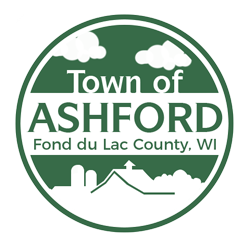Town of Belgium – Rare grassland nesting birds – meadowlark, bobolink,
dickcissel and short-eared owl among them – would find a home at
Harrington Beach State Park in northern Ozaukee County as part of the
proposed acquisition of 64 additional acres for the recreation area,
wildlife specialists said.
Protecting this extra piece of open space would provide a contiguous
block of nearly 300 acres of fields, meadows and shrub wetlands at the
park – the minimum size required to support a stable population of
grassland birds, said Dick Steffes, real estate director for the state
Department of Natural Resources.
The acquisition also would yield more space for hiking, hunting, bird
watching and cross-country skiing as the park gears up to double the
number of visitors next year – from 125,000 to 250,000 – with the
opening of its first campground, Steffes said. The 700-acre park is a
little more than 30 miles north of Milwaukee, east of I-43 along the
Lake Michigan shore.
The DNR has options to purchase 10 acres from Michael Ansay at a cost
of $240,000 and 54 acres from Family Enterprises, which is associated
with the Ansay family, at a cost of $406,000, Steffes said.
The gently rolling landscape of both parcels currently is used for
agriculture. The properties are adjacent to the northwest boundary of
the park, south of county Highway D and east of Lake Church Road.
Steffes will ask the Natural Resources Board to approve both
acquisitions at a Dec. 10 meeting in Madison.
Western meadowlarks were among the top 10 nesting birds in Wisconsin
just 40 years ago, said Noel Cutright, a past president of the
Wisconsin Society for Ornithology.
“Today, they’re essentially gone from eastern Wisconsin,” Cutright
said. “One was observed at Harrington Beach last year. Anytime you can
add more grassland space, you will gain more of these birds.”
A large area of grassland provides greater security from natural
predators, including skunks, raccoons and opossums, he said.
Gaining a viable population of grassland nesting species, a list that
also includes grasshopper sparrows, brown thrashers and northern
harriers, requires more adult birds to hatch more young than are eaten
by predators.
Populations of grassland birds generally are declining faster than
other groups of birds in Wisconsin, said Dale Katsma, a wildlife area
supervisor in Plymouth.
As more pastures and hay fields have been cultivated for row crops in
the last three to four decades, the grassland birds lost some
traditional nesting sites, Katsma said.
Harrington Beach encompasses a mile of lake shore and is used by
sunbathers, swimmers, families on picnics, anglers and hikers, said
Andrew Krueger, assistant property manager. An observatory operated by
the Northern Cross Science Foundation is open to the public.
Campers will be able to use the park for the first time in 2009 when
the DNR opens a 75-site campground that was built this year, Krueger
said. The campground is south of Puckett’s Pond and north of Cedar
Beach Road.
No opening date has been set. The campground will offer 10 electric
sites, five walk-in tent sites and other non-electric sites as well as
a group campground with five family sites. A shoreline campsite for
kayakers also will open in 2009, Krueger said.
